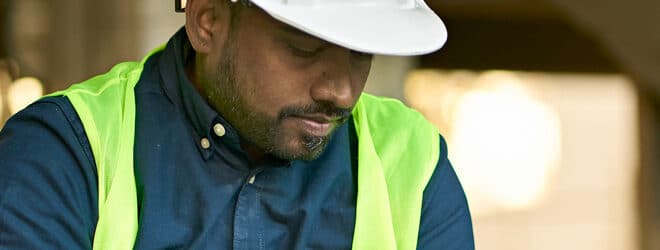New construction and renovation projects can often uncover a few surprises (if you frequently watch home reno shows, you’ll know that ant infestations and mould seem to make regular appearances). One surprise you don’t want to run into is asbestos.
If you and your team suspect that you’ve found asbestos in a home or a building, stop work immediately. This isn’t just a sensible precaution, it’s a legal requirement. Get everyone out of there, and seal off the location to prevent any further access.
Asbestos is a mineral, a fibrous rock that has been mined around the world and used for centuries in a wide range of applications. It’s impervious to fire, water and most chemicals. It’s an excellent insulator. It can be woven into cloth, moulded into almost any form and combined with cement or other binders to make a huge number of building and industrial products.
It’s also the single most deadly hazardous material we’ve ever had to deal with.
Today, more than 30 years after asbestos began to be seriously regulated, it is by far the biggest single source of work-related fatality claims, accounting in Canada and the U.S. for more than three-quarters of all such claims.
The problem lies in the tiny asbestos fibres that can become airborne wherever asbestos is used. Inhaled into the lungs, these fibres can cause mesothelioma, a rare and deadly form of cancer with no other known cause. Mesothelioma typically develops 25 to 40 years after exposure, which explains why we are still seeing high number of claims long after the substance was banned from almost all uses. (Asbestos also causes lung damage, referred to as asbestosis, among asbestos miners and industrial workers, as well as causing or contributing to other types of lung cancer.)
Despite the regulations and the bans and all the asbestos removal programs that have taken place over the years, there is still a lot of asbestos out there in older homes and buildings, in some types of infrastructure, and in older industrial products and materials. Asbestos may still be found in products and locations such as:
- Pipe and duct insulation, often wrapped with paper or other materials;
- Walls and ceilings as insulation;
- Sheets used as firewalls, stove and chimney liners and insulators;
- Sheet insulation,
- Flooring and tile products, and
- Roofing and siding shingles
Once work has been stopped and everyone has been cleared from the area, the next step is to contact a trained and certified asbestos abatement consultant or contractor. They’ll need to come in as soon as possible to do testing and assessment to determine what you’re facing and what needs to be done about it.
If it turns out that you are in fact dealing with asbestos, it will have to be removed by certified and licensed contractors (under no circumstances should you try to do it yourself). They, in turn, will have to use equipment and procedures that ensure no asbestos escapes into the air and that no worker or other person is exposed to airborne fibres.
There are generally three levels of asbestos abatement procedures that need to be followed.
- Type 1 asbestos abatement. Used when the site assessment has determined that all asbestos is in a “non-friable” form, meaning that it will not release fibres into the air. This would apply to things such as moulded tiles or shingles that used a binding agent such as cement to make a solid product. In these cases, the materials can simply be carefully removed, although power tools or equipment for cutting or breaking the material may not be used.
- Type 2: Applies when Type 1 materials have to be broken or crushed, and when small amounts of friable asbestos in things such as pipe insulation are present. At this level, workers must use appropriate personal protective equipment, and “containment” is required. Containment refers to sealing off the work area with plastic sheeting and ensuring negative air pressure to prevent airborne fibres from escaping.
- Type 3: Used where major work or large amounts of asbestos are involved, requires all of the above precautions, as well as showers to decontaminate workers.
Again, don’t try and dispose of asbestos on your own. Removal must be done by trained and qualified experts using the proper protective equipment.




